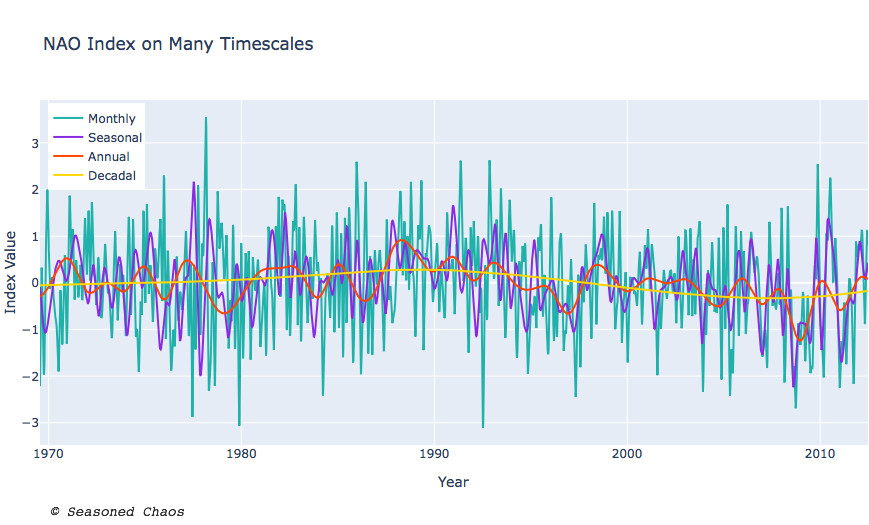If you live on the east coast of the U.S. or Canada or within Europe, the fate of your winter is often in NAO’s hands. Forecasters really depend on knowing the NAO phase to make long-range outlooks on temperature and precipitation in the cold season (cold season = October through April). If the NAO is neutral, we can’t use it to understand temperature and precipitation patterns.
It can be difficult to predict NAO phases since it both fluctuates a lot within a single season (intraseasonal variability) and fluctuates a lot from year to year (interannual variability). Some phases last months, while others last just days. What this means is that over the past twenty years the NAO may be mostly in a positive phase, however this year the NAO may be mostly negative, but in a single day the NAO could still be positive. Are you confused? Take a look at the figure below. It resembles a harmony of sound waves, but it is actually the same thing: NAO. The song state of the NAO varies based on the perspective you are taking, or the period over where you are averaging, be it monthly, subseasonally, annually, or decadally. If you are listening looking from the decadal lens, the value may be positive while simultaneously being negative if you are looking from the other timescales. Sort of like the difference between the front row versus the nose-bleed section.
(Static image is below, the interactive chart could be accessed here!)

(interactive chart link:) Timeseries of NAO on multiple timescales, such that monthly NAO has larger fluctuations between phases while decadal NAO is a smoother, longer transition between phases. By hovering over the timeseries, you can see that for a particular time, the monthly, seasonal, annual, and decadal NAO have different values and often have different signs (+ or -) too!
But overall, forecasters are not so bad at predicting the NAO phases in the winter, so from a forecasting perspective, it can be good news when the NAO is headlining. 
Written by: Marybeth Arcodia, Kayla Besong, Kurt Hansen, and Kelsey Malloy





